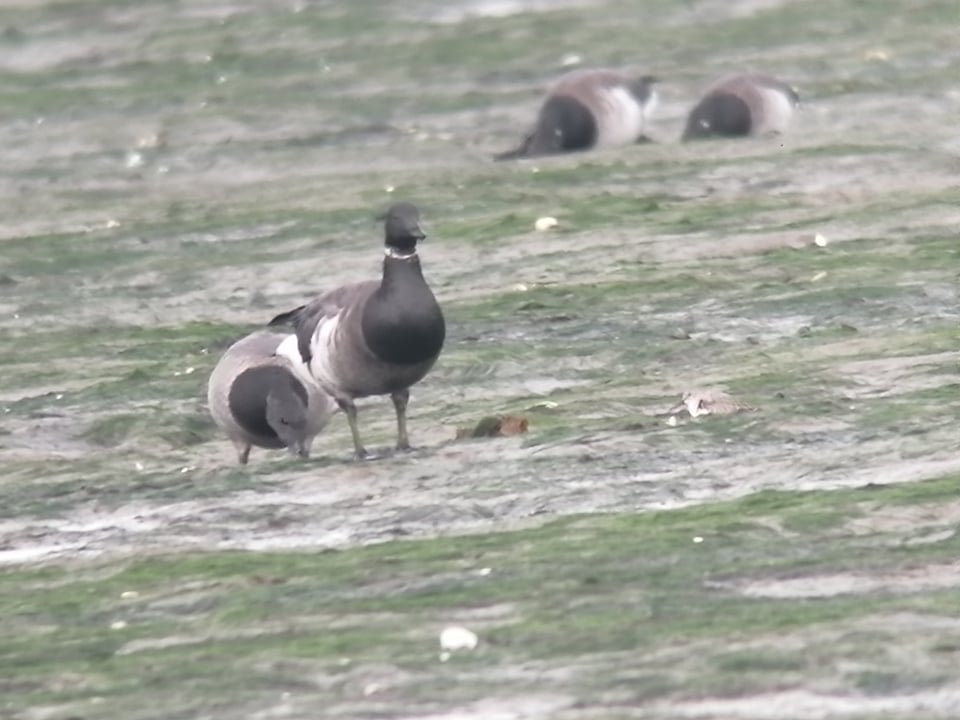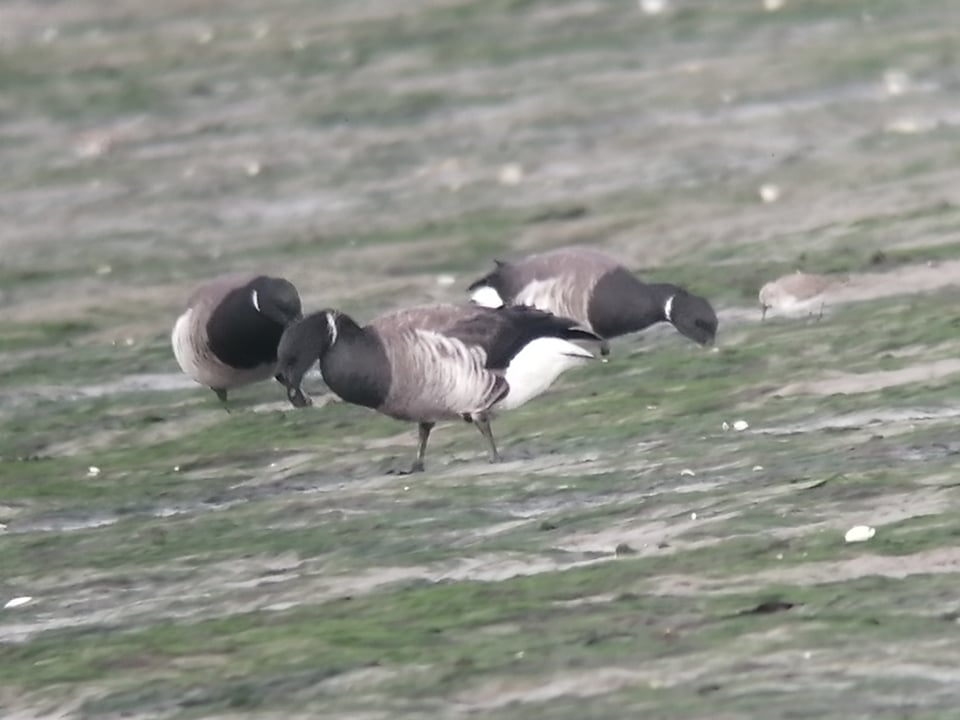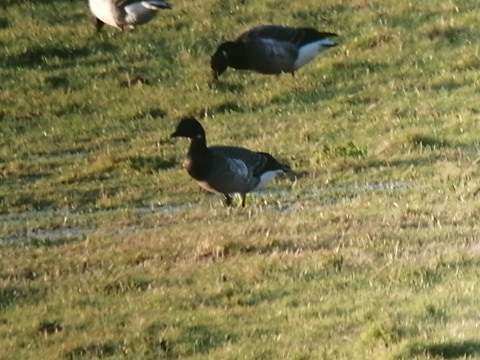The Grey-bellied Brant in Ireland
What is a Grey-bellied Brant:
The grey-bellied brant is a brent race (though hybrid has never been fully eliminated) from high Arctic Canada, just like the pale-bellied brent. This race has come to light in recent years on a larger scale, with more and more of these suspected rare vagrants being found in the UK and Ireland each winter. There is still quite little known about this race as a whole. Therefore anytime I get the opportunity to see candidates I make sure to photograph and document them well.
For a couple of years I have been fascinated by the brent/brant complex and have written a brief identification guide on the different races that occur in Ireland and the UK. I saw my first grey-bellied candidate at Rogerstown, Co. Dublin that was found by Aidan G.Kelly on the 19th of January 2014. And then found a good candidate at Rosslare back strand with Luke and Sean Gearty on the 4th of January 2019. There was a couple of interesting looking birds with this pale-bellied flock, though unfortunately they were extremely distant.
A very distant image of a potential adult male grey-bellied candidate, Which I now belive appeats to fit a dark-bellied brent better now. Though there was a candidate or two grey-bellied in this flock also, one of which can be seen above the dark-bellied type to thr right. January 4th 1019
This image doesn't show much to go on in terms of features, though it just about shows the bird and what caught the eye on the day.
(Luke Gearty)
Sandymount strand flock, October 29th, 2020
On October the 29th while working on Sandymount strand I came across a large flock of two-hundred plus pale-bellied brent geese that were feeding on an area of seaweed covered rocks that had been swept onto the strand by recent high tides and winds. While scanning through the flock I picked up an adult Dark-bellied brent feeding amongst the pale-bellied flock. As I began to scan the flock again, I came across a very dark brent type. Dark on the upper and underparts (Especially in the first two images as shown below). This mainly being down to the distance and poor lighting while initially photographing the bird/s. After looking at the male for quite some time I then began to scan the flock again and see what else maybe with the pale-bellied. As I saw the male again as it went into a channel out of view, I then spotted two dark juvenile birds (Not as dark as the male) though far darker brown on the underparts than any pale-bellied present. These juvenile birds seemed to be sticking with the male and a female bird that was also in and out of the channels which made viewing difficult. The female bird appeared more like a pale-bellied when I saw it several times briefly. Making me think is this a family flock of hybrid black brant x pale-bellied? Though, when looking at the juveniles I thought these birds are far to pale for any black brant influence. I did not see a third juvenile bird at the time, though it was very likely to have been present and then seen at Kilcoole on the 22nd of December 2020 with its two siblings and both parents.

Putative Adult male and juvenile/first-winter Grey-bellied brant.
This distant image makes this male look very black brant like, though it is missing that striking broad white collar.

Closer image of the adult male Grey-bellied candidate

Head on view of the adult male grey-bellied candidate
(This closer up image shows the extent of the grey on the males belly and underparts)

(The strong sunlight in this image shows how much a dark, almost black brant like bird can become like a pale-bellied in seconds)

Adult male and Juvenile grey-bellied candidates
Kilcoole family flock of grey-bellied candidates
On the 22nd of December 2020 I received a phone call from Niall Keogh with a query about the grey-bellied candidate family I had found on Sandymount stand back in October. He went on to tell me that he was looking at a male, female and three first-winter candidates in Webb’s field, Kilcoole marsh, Co. Wicklow. I decided to head down after work to see this flock for myself. While on my way, Niall sent me some phone-scoped images and video footage of the family flock. I could see that the adult male appeared to be the same as the bird on Sandymount back in October. Many of my phone-scoped images from Kilcoole are better quality compared to the ones from Sandymount. It is interesting to see how much the juvenile birds have changed since becoming first-winters. They are now quite a bit darker when I first saw them in Co .Dublin back in October.
Adult male:
The adult male is quite a striking individual, though he isn’t the most striking and darkest of the family unit. One of the first-winter birds is darker on both the upper and underparts. This male shows darker upper and underparts than any of the pale-bellied present and appears more like a black brant than a dark-bellied brent at times. Especially given the white flanks mixed with areas of grey markings which stands out to the nacked eye with close views of the flock. The upperparts are quite like a mix of black brant and pale-bellied rather than that chocolate brown/grey hue of the dark-bellied brent. The grey begins on the lower chest/upper belly area and runs down to the vent just like that of a black brant or dark-bellied brent. In good light it is clear to see that the colour is a grey/brown colour rather than a very dark brown/black when seen in poor dull lighting. The collar has become more striking as the winter has progreceed.
The back of the collar doesn’t meet and is very broad at the front and sides, which can be seen well when the bird stretches its neck out.


male, female and two first-winters
Adult Female:
On my first initial poor views of the female I had considered her to be a stronger pale-bellied candidate than a grey-bellied. But, since seeing and photographing her better at Kilcoole on the 24th of December I now believe that she is a strong candidate for a grey-bellied. The female shows upperparts that are more typical of a pale-bellied, perhaps a little darker. There is quite a lot of grey streaking/markings around the flanks also. Which I have often noted on some darker pale-bellied also. Female birds are the more difficult to get to grips with in terms of identification and require quite a lot of time and good photographs to try and get the bird into the grey-bellied candidate category.
All of the pictures of the female were taken on the 24th of December.

Adult female with a first-winter grey-bellied candidate
 female grey-bellied candidate
female grey-bellied candidate
First-winters:
There are three first-winter birds with the adult male and female, the offspring of this pair. Two of the birds are very dark even compared to the male. The third is quite substantially paler though stands out from the crowd of immature pale-bellied present. Two of the dark birds show dark brown/blackish upperparts and underparts just like that of a black brant. The white wing coverts stand out on both of these birds due to how dark they are on the upper and underparts. Both birds show a white area on the flanks, though not as contrasting as that of the adult male. The third first-winter shows a paler grey/brown tone to the upper and underparts.

Both Dark first-winter grey-bellied candidate

Male, female and three first-winter Grey-bellied brent candidates

Two adult pale-bellied brent for comparison to the adult grey-bellied types

The family of putative grey-bellied and a tag along pale-bellied
I hope to spend more time with this family of potential grey-bellied brants over the next few weeks before they depart for Arctic Canada in Spring.
#Wildfowl #Geese #Brent #Brant #Vikingoptical #BirdGuides #Winterbirding #Wicklow #Dublin









